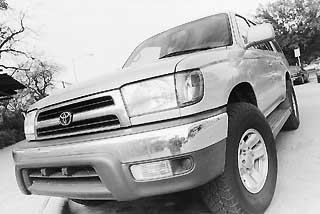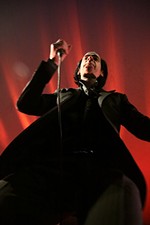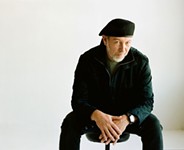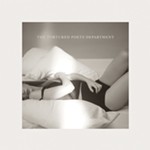Naked City
Seeing Red
By Dan Oko, Fri., Feb. 4, 2000

In the litany of complaints about the-way-Austin-is-now, traffic problems frequently crop up near the top of the list. But if you happen to drive a sport utility vehicle or any other so-called light truck -- a distinction that also includes minivans and pickups -- it's time to admit that you're part of the problem, and not part of the solution. At least that's the theory put forth by UT researcher Kara Kockelman, the Clare Boothe Luce Professor of Civic Engineering, who recently released a pair of reports underscoring the negative impact these vehicles are having on roadways across the nation and across town.
As if critics needed more ammunition in the debate surrounding SUVs, Kockelman's reports raise several issues about gas mileage, safety, and traffic flow as they relate to light trucks. In one report, she and Raheel A. Shabih, a UT grad student in civil engineering, took a video camera to a pair of busy Austin corners to determine how many cars could make it through a timed traffic light when SUVs and the like were present.
What the researchers found out wasn't good: Driver tendencies and the increased weight and height of SUVs limited the number of vehicles that made it through the intersections. Austin is not alone in this trend toward crowded streets and slow-moving traffic, says Kockelman; but, she adds, the city does epitomize the problem. "Every place is getting worse," she says. "In virtually every urban area, we see increasing numbers of vehicle miles traveled and increased suburbanization."
Kockelman says the type of vehicles on the roads aren't the only issue at hand, but they are a problem from the standpoint of traffic flow, gas consumption, and air pollution. In the study she did with Shabih, Kockelman demonstrated that light trucks decreased intersection capacity and increased urban congestion. The pair videotaped thousands of cars passing through the intersection at Lamar and Barton Springs, and at Martin Luther King and the I-35 frontage road. They found that on average, a single SUV spent as much time going through the intersections as 1.41 passenger cars, while a pickup was the equivalent of 1.33 passenger cars.
Despite the fact that the federal government and highway planners still consider light trucks in the same class as passenger cars for regulatory purposes, the actual difference in length between cars and light trucks means that SUVs take up 10% more space. To make matters worse, Kockelman and Shabih concluded that in many cases the height difference between cars and light trucks means that drivers waiting behind legions of Troopers, 4Runners and Suburbans can't see what's going on. As a result, car drivers can't see signal changes, and may tend to hang back to increase their ability to see and be seen.
Combine these ingredients with the fact that the SUVs and pickups are heavier than passenger cars and therefore take more time to get up to speed when the light turns green, and you've got a recipe for slow-moving lanes and inefficient intersections. Kockelman's second study showed that, far from being safer than other vehicles, trucks tend to be more dangerous to other vehicles. By taking them off the road, she argues, you reduce the risk to all drivers.
Like any good engineer, Kockelman has also been working to come up with solutions to many of the problems her study draws attention to. Kockelman believes that most changes need to be made on the federal level, and hopes to get Congress to address some of the discrepancies in the way car manufacturing is regulated. She also calls for a shift in the way urban and highway planners think about traffic. "The place this needs to hit home is the [U.S.] Congress," Kockelman says. "But I think the constituents are the ones who are going to make a difference."
Got something to say on the subject? Send a letter to the editor.








